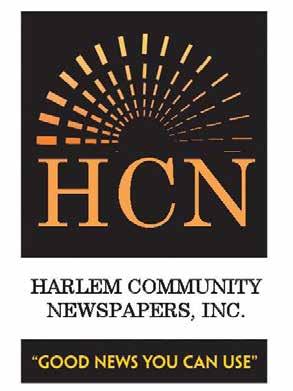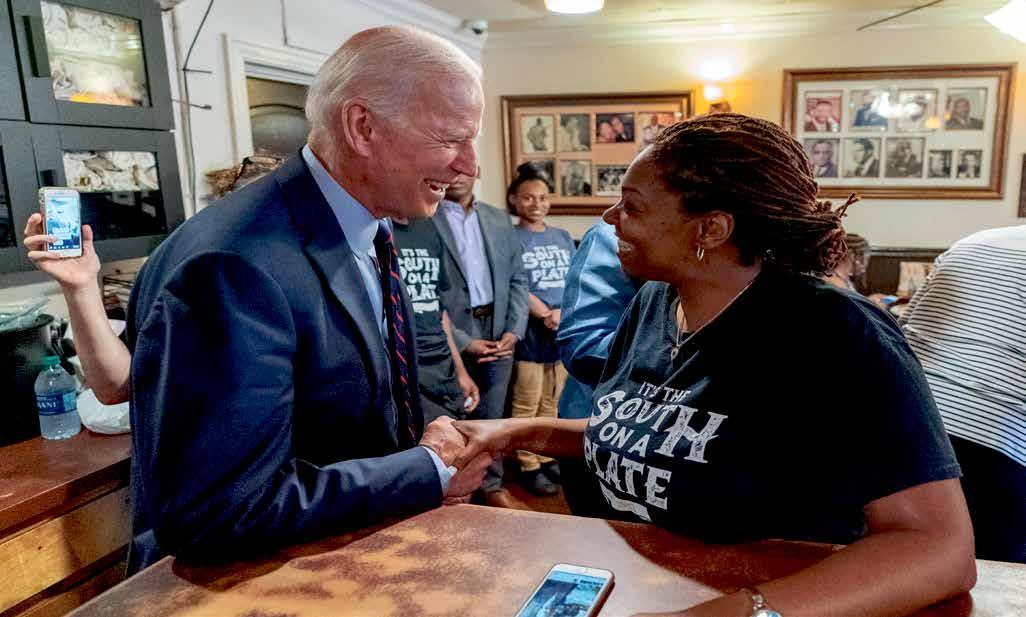
4 minute read
Op Ed Editorial
HARLEM COMMUNITY NEWSPAPERS
Report Reveals Alarming Amount of Systemic Police and Prosecutorial Misconduct
Advertisement
By Stacy M. Brown, NNPA Newswire Senior National Correspondent @StacyBrownMedia O n Jan. 21, 2011, former Chicago Police Command - er Jon Burge was sentenced The study found that 54 percent of official misconduct involved corruption or negli - to four and a half years in federal gence by police, prosecutors, lab prison for perjury and obstruc - workers, or other government tion of justicebecause he lied un- employees. der oath about his use of torture The authors – which includ - to extract confessions from nu - ed researchers from the Newkirk merous criminal suspects, over- Center for Science at the Uni - whelmingly Black men. versity of California, Irving, the
Burge was fired in 1993 and University of Michigan Law was prosecuted only for lying in School, and the Michigan State a civil case. He served more than University College of Law – four years in prison and died in cautioned that “the tally is very 2018 likely a vast undercount of the
In 1987, when Ken Ander - actual number of instances in son was District Attorney of which misconduct has led to the Williamson County, Texas, he convictions of innocent people.” successfully prosecuted Michael They outlined that many Morton for murdering his wife, who’ve been wrongly convicted Christine. –including those who pleaded
In 2011, DNA testing of a guilty to low-level crimes – did bandana found near the crime not have the necessary resources scene identified the actual killer. or legal counsel.
The District Attorney’s Of - “If these systemic problems fice had successfully resisted are corrected, misconduct is less testing that bandana for many likely to occur – and when it does years. Morton spent 24 years in happen, more likely to be coun - prison for a crime that he did not teracted before innocent people commit – a crime that was itself are condemned.” an unspeakable tragedy for him Overall, Black defendants’ and his family. exonerations have a slightly
The real killer went on to higher rate of misconduct than bludgeon another woman to those of white defendants, 57 death in 1988. Anderson himself percent to 52 percent. was disgraced. He pled guilty But the differences are more to contempt of court, spent four significant for murder cases (78 days in jail, was disbarred, and percent to 64 percent) – especial - was forced to resign from the ly those with death sentences (87 position he later held as a judge. percent to 68 percent) – and drug
In the report titled, “Govern - crime exonerations (47 percent to ment Misconduct and Convicting 22 percent). the Innocent: The Role of Pros - The study concluded that of - ecutors, Police and other Law ficial misconduct falls into five Enforcement,”the National Reg - general categories: istry of Exonerations examined Witness tampering occurred more than 2,400 cases nationally in about 17 percent of exonera - which measured the role of gov - tions. ernment misconduct in wrongful Misconduct in interrogations convictions and how African occurred in 57 percent of all ex - Americans specifically suffer onerations with false confessions from those actions. or about 7 percent of all cases.
Fabricating evidence hap - pened in about 10 percent of cases, in three forms: Forensic fraud – in 3 percent of exonera - tions, police officers or forensic analysts lied about forensic evi - dence.
Fake crimes – in 4 percent of exonerations, police planted drugs or guns on innocent sus - pects, or lied and said the sus- pects had assaulted them.
Fictitious confessions – in about 2 percent of exonerations, officers fabricated confessions from defendants who did not confess.
At trial, misconduct occurred in about 23 percent of exonera - tions, about evenly divided be- tween perjury by law enforce- ment officers, 13 percent, and trial misconduct by prosecutors, 14 percent (with some overlap).
Misconduct in interroga - tions occurr
In 1959, the Supreme Court held that a prosecutor has a con - stitutional obligation to correct perjury by a state witness even if she did not herself offer the false testimony.
However, researchers discov - ered that prosecutors permitted perjury to go uncorrected in 8 percent of exonerations. In most cases, the perjury was by civilian witnesses.
The most common lies were about the favorable treatment the witnesses receive in pending criminal cases of their own.
“We know that prosecutors lied in court in 4 percent of ex - onerations. The real rate may be higher since we only count cases with clear evidence that prosecu - tors made statements they knew were false,” the researchers not - ed further.
They said about half of lies by prosecutors were made in a closing argument with a common pattern of repeating and affirm - ing perjury by a witness that the prosecutor knew about but failed to correct – for example, a lie by a witness who claimed to have no deal with the prosecutor.
Federal prosecutors commit - ted misconduct in exonerations more than twice as often as po - lice (52 percent to 20 percent), while state prosecutors commit - ted misconduct less often than police (29 percent to 36 percent).


Vol. 25, No 40 October 1, 2020
subscription information page 22











